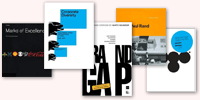
A B-Side BY Armin
Amsterdam Gay Pride
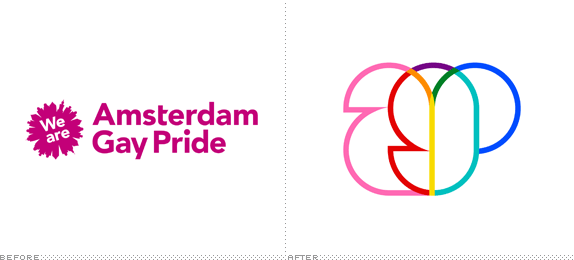
About: (Est. 1996) “Amsterdam Gay Pride is a week to remember where we have been, celebrate how far we have come and take pride in where we are going. It is a captivating festival that salutes the power and beauty of sexual diversity. Bursting with loving energy and colourful creativity the party makes sure no one escapes the provoking and entertaining vibe of giving everyone the right to be who they are and love whoever they choose.”
Design by: VBAT.
Ed.’s Notes: Nice, subtle take on the rainbow color palette. Bigger and single-color versions of the logo below (or after the jump).
Relevant links: N/A.
Provided quote: “AGP has approached VBAT to create this new identity as the former ‘We Are’ logo, also developed by VBAT in 2008, will be used in a broader context as hallmark for all gay events in Amsterdam in the future. Therefore a new dedicated festival identity was wanted.”
Continue reading this entry

DATE: Mar.20.2013 POSTED BY: Armin
POSTED BY: Armin CATEGORY: Culture The B-Side
CATEGORY: Culture The B-Side  COMMENTS:
COMMENTS:


Opinion BY Armin
Open Sesame
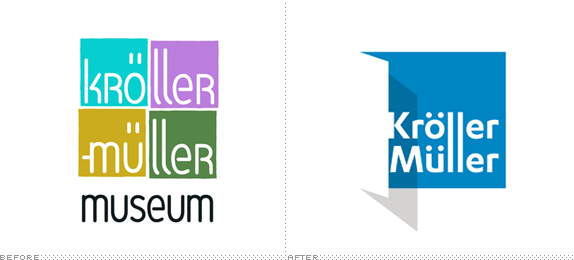
Established in 1938 in the middle of National Park De Hoge Veluwe, a little over an hour outside of Amsterdam, the Kröller-Müller Museum is home to the second largest collection of Van Gogh paintings in the world as well as boasting the biggest sculpture garden in Europe. Looking to attract more visitors and raise its profile the museum has introduced a new identity designed by the Amsterdam office of Edenspiekermann.
Continue reading this entry

DATE: Mar.13.2013 POSTED BY: Armin
POSTED BY: Armin CATEGORY: Culture
CATEGORY: Culture  COMMENTS:
COMMENTS:

TAGS: amsterdam, colorful, dimension, edenspiekermann, flexible identity,

Opinion BY Armin
Brighton’s D and F: Anything but Fail
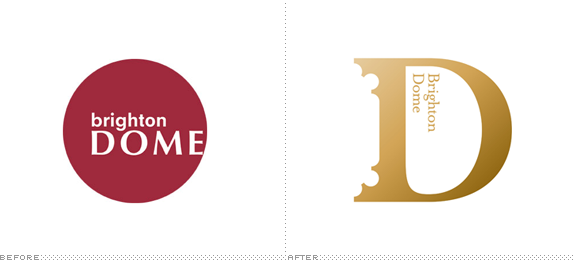
Originally built as the stables and riding house of the Prince of Wales in 1803, the Brighton Dome in Brighton, England — dubbed “city on the edge” — is one of the premier performance venues in the UK, hosting “over 600 events spanning music, theatre, dance, comedy, literature, spoken word, visual arts, film, digital and more.” Brighton Dome consists of three separate spaces: The main Concert Hall, the Corn Exchange, and the Studio Theatre. The Dome and its venues, along with multiple others, and the city of Brighton have been host, since 1967, to the Brighton Festival, a “three week celebration of music, theatre, dance, circus, art and film.” These two entities have been given a new, cohesive identity by London-based johnsonbanks, who explain that the Dome “has always struggled to clearly identify itself, even to the local arts community” and that “each of its constituent parts and multiple venues tended to act independently of each other across 11 months of yearly programming,” while the Festival has undergone an identity redesign each year.
Continue reading this entry

DATE: Mar.04.2013 POSTED BY: Armin
POSTED BY: Armin CATEGORY: Culture
CATEGORY: Culture  COMMENTS:
COMMENTS:

TAGS: comprehensive identity program, johnson banks, serif, slab serif, uk,

Opinion BY Armin
Oklahoma Gets its Contemporary On
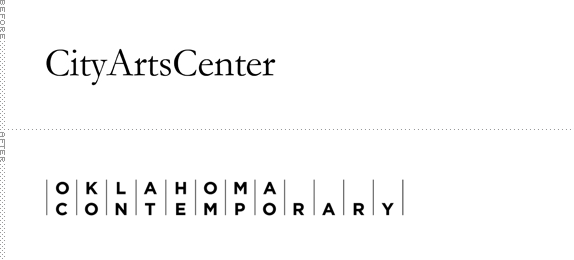
Established in 1989 in Oklahoma City, OK, as City Arts Center, the recently renamed Oklahoma Contemporary is a nonprofit organization that offers progressive and innovative art exhibits and “encourages artistic expression in all its forms through education and exhibitions.” Last week the organization announced its name change and introduced the new identity designed by Saffron.
Continue reading this entry

DATE: Feb.25.2013 POSTED BY: Armin
POSTED BY: Armin CATEGORY: Culture
CATEGORY: Culture  COMMENTS:
COMMENTS:


Opinion BY Armin
Home is Where the Holes Is

In April of 2012 it was announced that two Manchester cultural institutions — Cornerhouse, an “international centre for contemporary visual arts and independent film” and the Library Theatre Company, who produce a mixture of contemporary drama and modern classic plays — would merge to create a single, producing arts organization. Now, this new organization has a name, HOME, and new identity designed by o street and Creative Concern.
Continue reading this entry

DATE: Feb.20.2013 POSTED BY: Armin
POSTED BY: Armin CATEGORY: Culture
CATEGORY: Culture  COMMENTS:
COMMENTS:

TAGS: manchester, orange, Sans Serif, uk, uppercase,

A B-Side BY Armin
LAMDA
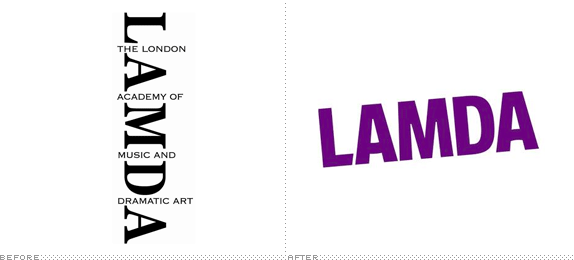
About: (Est. 1861) “LAMDA (London Academy of Music & Dramatic Art) is one of the leading drama schools in the English-speaking world and conducts the most eminent set of public examinations in speech and drama.” “As a world-class drama school, LAMDA has been fuelling the global performing arts industry with new talent for 150 years.” Notable alumni: Donald Sutherland, Richard Harris, Brian Cox, and Benedict Cumberbatch.
Design by: Hudson Fuggle.
Ed.’s Notes: New logo hasn’t shown up on their website yet but it is on their Facebook and Twitter accounts. A small sample of their seasonal brochures below (or after the jump).
Relevant links: N/A.
Continue reading this entry

DATE: Feb.08.2013 POSTED BY: Armin
POSTED BY: Armin CATEGORY: Culture The B-Side
CATEGORY: Culture The B-Side  COMMENTS:
COMMENTS:


A B-Side BY Armin
Gelderland Broadcasting
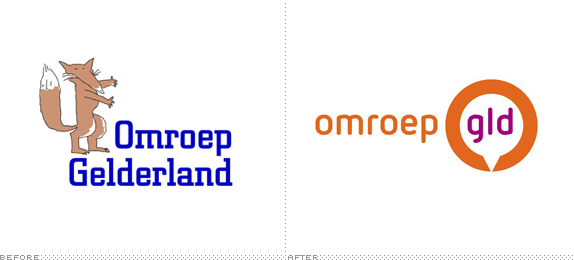
About: (Est. 1985, Radio; 1996, TV) “Omroep Gelderland (in English: Gelderland Broadcasting) is a regional public broadcaster for the Dutch province of Gelderland and they have their own radio station and TV channel broadcasting primarily for the province itself.” (Source: Wikipedia).
Design by: N/A.
Ed.’s Notes: Funny video of literally changing the new for old logos below (or after the jump).
Relevant links: New identity page.
Continue reading this entry

DATE: Jan.17.2013 POSTED BY: Armin
POSTED BY: Armin CATEGORY: Culture The B-Side
CATEGORY: Culture The B-Side  COMMENTS:
COMMENTS:

TAGS: dutch, lowercase, radio, rounded sans serif, tv,

A B-Side BY Armin
Brooklyn Public Library
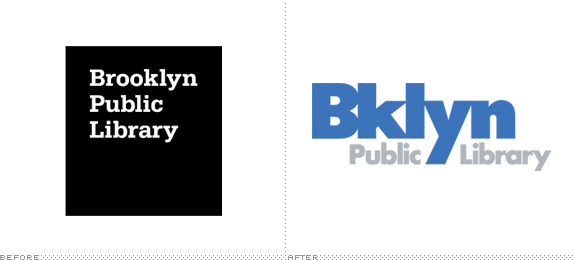
About: (Est. 1896) “As an independent system, separate from the New York City and Queens libraries, Brooklyn Public Library serves the borough’s 2.5 million residents, offering thousands of public programs, millions of books and use of more than 1,100 free Internet-accessible computers.”
Design by: Eight and a Half.
Ed.’s Notes: I’m not usually the correct-English-police but there is something odd about the library using the slang-ish abbreviation of the borough. It’s far more readable at smaller sizes, that’s for sure.
Relevant links: BPL blog post with historical logos.
Select quote: “Gone is the sad little black box that for so long meekly defined our presence in the digital realm. There’s something invigorating about the facelift that comes with rebranding — it seems to signify a fresh start, a new direction.”
Thanks to Ricardo Cordoba for the tip.

DATE: Jan.15.2013 POSTED BY: Armin
POSTED BY: Armin CATEGORY: Culture The B-Side
CATEGORY: Culture The B-Side  COMMENTS:
COMMENTS:

TAGS: bold, brooklyn, library, Sans Serif,

A B-Side BY Armin
LOV/CON
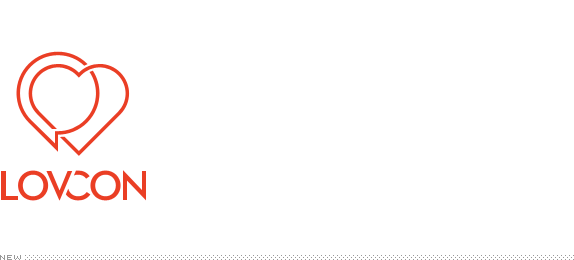
About: (Est. 2012) LOV/CON is a conference about love, passion and relationships. […] Caroline and Daniel Pieracci had the idea to put on LOV/CON as a fun way to celebrate their marriage with their friends and family. It quickly outgrew itself, and became a little love movement.”
Design by: Johannes Widmer.
Ed.’s Notes: I love this logo. That is all.
Relevant links: N/A.

DATE: Dec.21.2012 POSTED BY: Armin
POSTED BY: Armin CATEGORY: Culture The B-Side
CATEGORY: Culture The B-Side  COMMENTS:
COMMENTS:


Opinion BY Armin
Typographic Tolerance
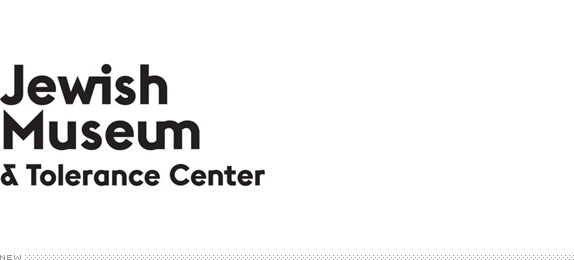
Inaugurated this November, the Jewish Museum & Tolerance Center is a 27,000-square-foot, state of the art, 50-million-dollar museum in Moscow, becoming one of the world’s largest museums to chronicle the history of the Jewish people and Israel. Housed in the Bakhmetevsky Bus Garage, the museum’s design was conceived by New York, NY-based Ralph Appelbaum and Associates and features interactive tables, hologram projections, and even a recreation of a Shtetl (small areas within a city with lots and lots and lots of Jews). The identity has been designed by Moscow-based Fleve.
Continue reading this entry

DATE: Dec.18.2012 POSTED BY: Armin
POSTED BY: Armin CATEGORY: Culture
CATEGORY: Culture  COMMENTS:
COMMENTS:

TAGS: blue, museum, russia, Sans Serif,




























